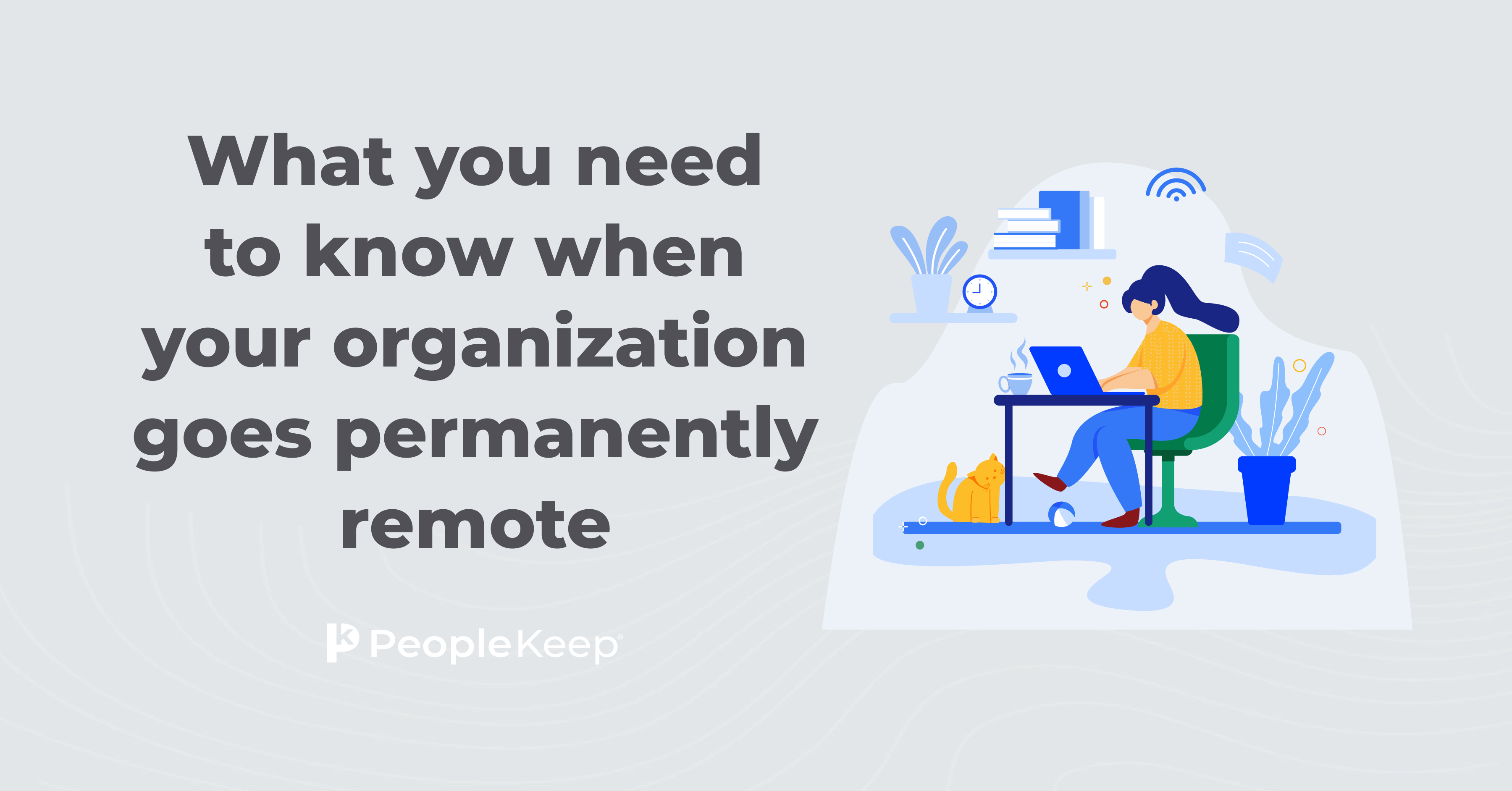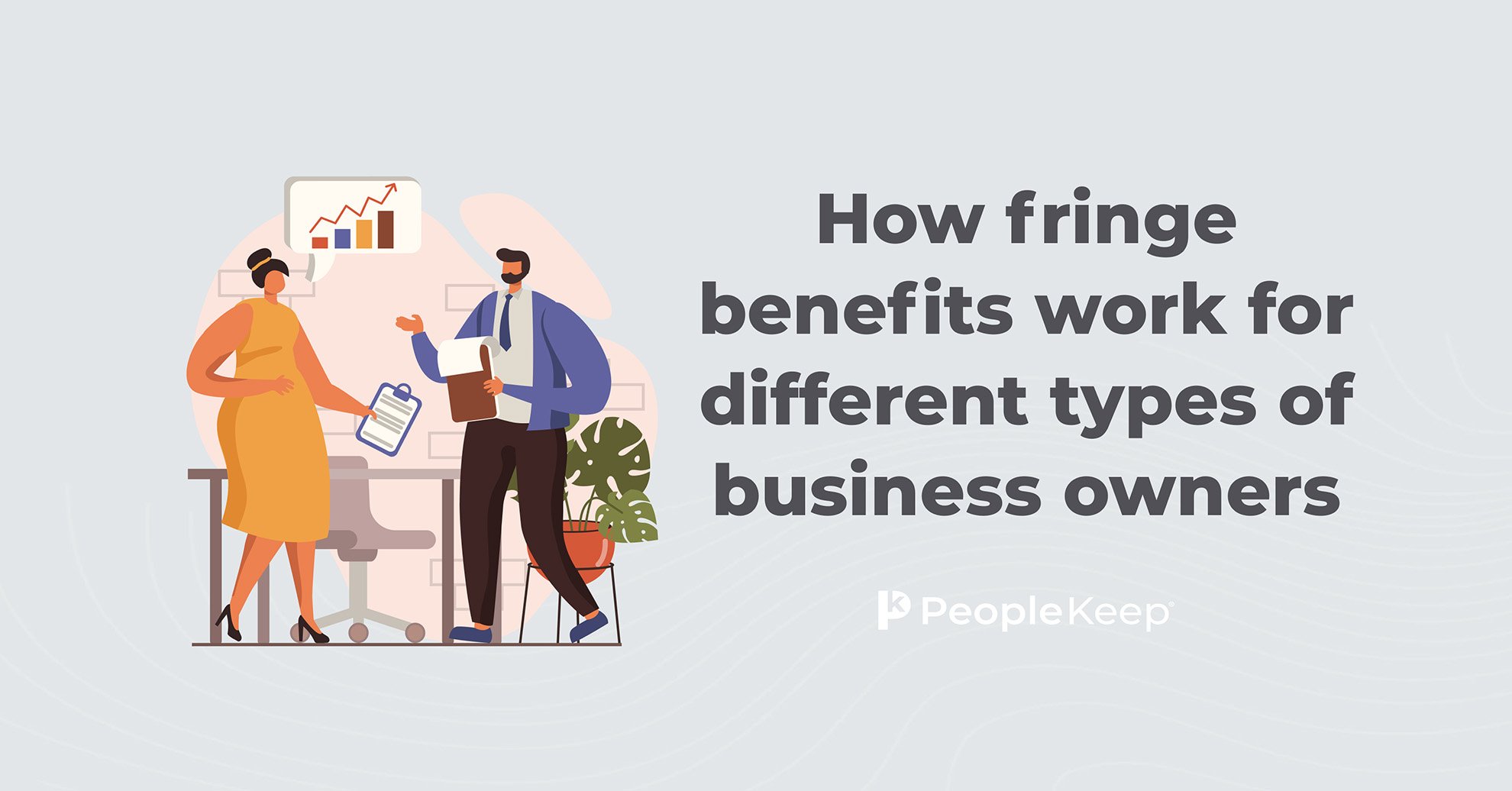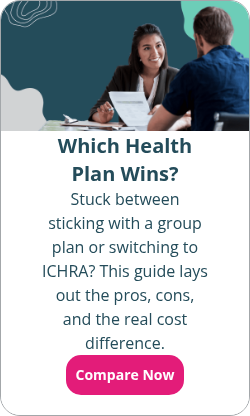What are personalized benefits and why do they matter?
By Chase Charaba on January 9, 2024 at 7:20 AM
In recent years, many American businesses have shifted from offering traditional employee benefits to a new model: personalized benefits. This new model allows organizations of all sizes to provide sustainable benefits that deliver real value to employees.
While the shift toward personalized benefits may seem new, the trends fueling it aren't. The ever-increasing rates of traditional employee benefits like health insurance and the rise in healthcare consumerism have pushed personalized benefits to the forefront.
In this article, we'll explain what personalized benefits are, what's driving the shift to personalized benefits, and how to offer these flexible benefits to your employees.
Takeaways from this blog post:
- Personalized benefits are a new model that allows organizations to provide sustainable and valuable benefits to employees based on their individual wants and needs.
- Offering personalized benefits gives employees the freedom to use their benefits in a way that suits them, increasing employee satisfaction and attracting and retaining top talent.
- Factors such as the shrinking group health insurance market, the rise in healthcare consumerism, and changing priorities following the COVID-19 pandemic drove the shift towards personalized benefits.
What are personalized benefits?
The American workforce is diverse. Every employee has individual wants and needs. This is especially apparent when it comes to generational differences in the workplace. The benefits a Gen Z worker values are often different from those of a Baby Boomer employee. So, how do you reconcile these differences without your employee benefits becoming too complicated?
Instead of relying on traditional employee benefits that offer the same range of benefits to all your employees, you can offer personalized employee benefits. These benefits empower your employees to use their benefits the way they want to rather than forcing them into a one-size-fits-all plan.
Our 2022 Employee Benefits Survey Report found that 65% of employees surveyed value choosing their own benefits. Yet, only 36% of respondents felt they had a say in their benefits.
Creating a personalized experience is often accomplished by providing employees with a monthly or annual expense allowance. Common methods of the allowance model include employee reimbursements and benefit expense cards, such as lifestyle spending accounts (LSAs).
With a reimbursement plan, you can review employee expenses and reimburse your workers for their medical costs, employee perks, and remote work expenses that they choose.
Offering personalized benefits for employees helps your organization attract and retain top talent. It also gives your employees the freedom to make meaningful choices about their healthcare. This also increases employee engagement and satisfaction, which can help you become an employer of choice among job seekers.
What's causing the shift to personalized benefits?
Many factors led to the shift from traditional benefits to personalized benefits in the American workforce. However, some of the main causes were the shrinking group health insurance market, the rise in healthcare consumerism, a tight labor market following the Great Resignation, and changing priorities following the COVID-19 pandemic.
Let’s go over each cause in more detail.
The shrinking of the group health insurance market
When businesses began offering employee benefits in the 1940s, low costs and significant tax advantages allowed them to be generous with their benefits packages. Group health insurance policies typically covered the total cost of employees' medical needs, and company-sponsored pension plans fully funded former employees in retirement.
As Americans began to live longer, retirement costs accelerated. Healthcare costs also rose, fueled by longer life expectancies, competitive business interests, and government regulations.
KFF found that between 1999 and 2023, the average annual premium1 for single employees under a group health insurance policy grew from $2,196 to $8,435. Family coverage under a group health insurance plan increased from $5,791 in 1999 to $23,968 in 2023.
These cost increases helped to shrink the small business group health insurance market in favor of offering more personalized health benefits.
According to the KFF2, in 2000, 65% of businesses with fewer than 200 employees offered a group health insurance policy. By 2015, that number dropped to just 55% of businesses. According to the 2023 report3, 53% of organizations offered health insurance.
Recognizing that health benefits were crucial to employee retention and recruiting, many organizations compromised by cutting back on the workplace benefits they offered. Instead of covering the total cost of employees' healthcare, they sponsored group health policies with higher deductibles and more exclusions.
Newly introduced programs allowed employers to provide employees with more choices in spending their benefit dollars. The health reimbursement arrangement (HRA) was among the first widely used personalized benefits. We'll cover these in more depth later in the article.
Healthcare consumerism
Another cause for the rise in personalized benefits is the healthcare consumerism movement. In this case, healthcare consumerism is where employees take more control over their health benefits and healthcare decisions in search of personalized care.
With healthcare consumerism, employees looking for health benefits act more like consumers shopping for a hotel or product online. They want quality, affordable options for their healthcare that work best for their needs.
A tight labor market
Following the Great Resignation, where millions of workers left their jobs in search of better opportunities in 2021 and 2022, the United States has faced a tight labor market. According to the Bureau of Labor Statistics4, there were 0.7 unemployed individuals for every job opening in November 2023. With more job openings than job seekers, organizations have to find new ways to attract job applicants.
Personalized benefit programs allow organizations to offer the types of benefits employees value. You’ll attract top talent by offering meaningful benefits as part of your compensation strategy.
The effect of COVID-19 on employee benefits
Following the COVID-19 pandemic, today’s employees value flexibility and individualized benefits more than ever.
The pandemic introduced many employees to remote work and flexible work schedules for the first time. Traditional employee benefits didn't provide enough personalization with employees out of the office and living more widespread than ever. Employees who worked remotely couldn't take advantage of office wellness programs, for example, as it would inconvenience these employees.
As a result, organizations began to provide employees with more flexible benefits, such as reimbursements for wellness expenses.
What personalized benefits are available to employees?
With employee benefits playing a crucial role in employee retention and recruiting, many organizations now offer personalized benefits. You can provide varied benefits for healthcare, wellness, remote work, education, professional growth, transportation, retirement, and more.
The following section will share some of the most common personalized employee benefits available, such as HRAs and employee stipends.
Personalized health benefits
Due to rising group health insurance costs and complexity, many new health benefits have emerged for organizations of all sizes. This includes HRAs, health savings accounts (HSAs), and health stipends.
Health reimbursement arrangements (HRAs)
HRAs were first recognized as a viable health benefits option by the IRS in 2002. Employers could offer an HRA to employees and retirees as an Employee Retirement Income Security Act (ERISA) plan as a way for businesses to reimburse employees for medical expenses not covered by a company's group health insurance policy. This is known as an integrated HRA or group coverage HRA (GCHRA).
As the cost of health insurance continued to rise, HRAs evolved to be able to reimburse employees for individual health insurance policies and other qualified medical expenses. This meant employers could offer HRAs in place of group health insurance.
Though the Affordable Care Act (ACA) limited HRAs in 2014, the 21st Century Cures Act reintroduced them to the small business market beginning in 2017 with the qualified small employer HRA (QSEHRA).
Since then, more HRAs have become available, such as the individual coverage HRA (ICHRA).
You can reimburse your employees for their qualifying medical expenses with an HRA. You can choose whether to allow reimbursements for individual health insurance premiums only or out-of-pocket medical expenses. Simply set a monthly allowance for your employees to use and approve their eligible expenses.
The best part about offering an HRA to your employees is that it is tax-free for both you and your employees.
HSAs
Congress introduced HSAs to complement less generous health policies and to encourage people to make more personal choices about their care. Created in 2003, HSAs allow employees to save and spend tax-free money on certain medical expenses.
Employees, their company, or both can fund these accounts. Because employees can keep their HSA after they leave your organization, some people use their HSA as more of a retirement fund than a way to pay for medical expenses.
If you want to ensure that your employees use their monthly allowances for medical expenses, offering an HRA is often a better choice.
Health stipends
Another option for providing personalized health benefits to your employees is a health stipend. Health stipends allow you to reimburse employees for medical expenses like an HRA. However, health stipends offer more flexibility thanks to fewer regulations from the IRS.
For example, with a health stipend, you can reimburse an employee for mental health counseling even if your employee isn't diagnosed with a mental illness. Or, you can reimburse employees for types of insurance an HRA doesn’t allow.
You can offer a health stipend to any employee, including 1099 contractors and international workers. They are also an excellent option for employees who receive advance premium tax credits because they can still use their health stipend without affecting their APTC eligibility.
But there's a catch. Health stipends are taxable for both the employer and the employee. A stipend also doesn’t satisfy the ACA’s employer mandate for organizations with 50 or more full-time equivalent employees.
Personalized wellness benefits
Wellness benefits are a great addition to any employee benefits package. While health benefits are essential for attracting and retaining employees, they generally don't cover other aspects of employee well-being, such as fitness, stress management, or inclusion.
When crafting an employee wellness program, you aim for holistic employee wellness. One of the best ways to do this is by providing personalized wellness benefits such as a wellness stipend.
With a wellness stipend, you can reimburse employees for their wellness expenses. This includes expenses such as gym memberships, fitness classes, yoga, meditation mobile apps, and more. This empowers your employees to take charge of their physical and mental wellness, improving workplace productivity.
Just like with a health stipend, wellness stipends are taxable. However, they provide the most flexibility for your employees compared to offering in-office wellness perks.
Other personalized benefits
Personalized benefits can take many forms. Retirement benefits began evolving toward personalization with the creation of IRAs in 1974. These incentivized employees to start saving for retirement on their own. These accounts weren't tied to the organization, and investment options were endless.
The federal government extended tax advantages toward other benefits that allowed personalization during this time. In 1986, the Tax Reform Act gave businesses the power to contribute up to $5,250 tax-free toward their employees' education.
Tax-free transportation benefits followed in 1993. In 2010, the Small Business Jobs Act allowed employers to contribute tax-free money toward employees' cell phones if employees used the phones for business purposes.
If your organization has remote workers, you can provide them with a monthly remote work stipend to help them pay for their home internet bills, cell phones, or home office set-up costs. Employees only need to request a reimbursement and submit their receipts for approval. This enables your remote workforce to use their stipend for whichever expense is most meaningful to them.
You can also offer employee stipends for various fringe benefits. This includes tuition reimbursement, student loan repayment, and commuter benefits.
Conclusion
With personalized benefits, you can take a holistic approach to the unique needs of your entire team. These beneficial benefits give your employees more freedom over the expenses they want you to reimburse them for. This will enable you to offer reimbursement toward the benefit options they find most valuable.
At the same time, varied benefits allow businesses of all sizes to define their budget and escape the complexity of traditional employee benefits.
If you're ready to offer HRAs to your workforce, PeopleKeep can help. Our benefits administration software enables you to easily set up a new employee benefit in minutes.
This blog article was originally published on August 17, 2017. It was last updated on January 9, 2023.
- https://www.kff.org/health-costs/report/2021-employer-health-benefits-survey/#:~:text=The%202021%20survey%20included%201%2C686,the%20cost%20of%20their%20coverage
- http://files.kff.org/attachment/Report-Employer-Health-Benefits-2016-Annual-Survey
- https://www.kff.org/report-section/ehbs-2023-summary-of-findings/
- https://www.bls.gov/charts/job-openings-and-labor-turnover/unemp-per-job-opening.htm
Check out more resources
See these related articles

What you need to know when your organization goes permanently remote
Going permanently remote? Get ready with this comprehensive guide that covers everything you need to know about transitioning your organization to remote work.

How fringe benefits work for different types of business owners
While fringe benefits are primarily designed for your employees, there are cases where business owners can participate. Here's how.

What is healthcare consumerism?
Discover what healthcare consumerism is and how it empowers individuals to make informed decisions about their healthcare spending and choices.



